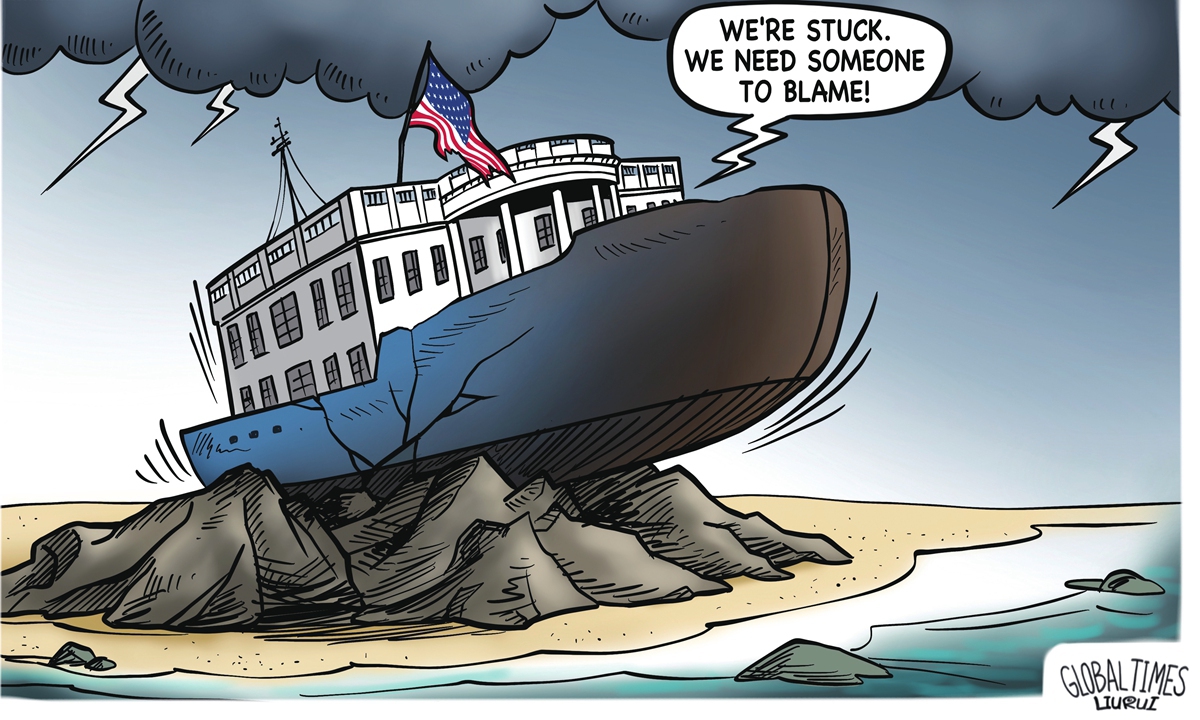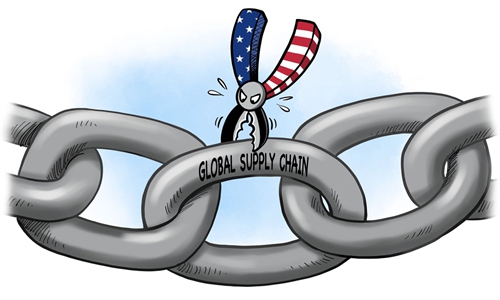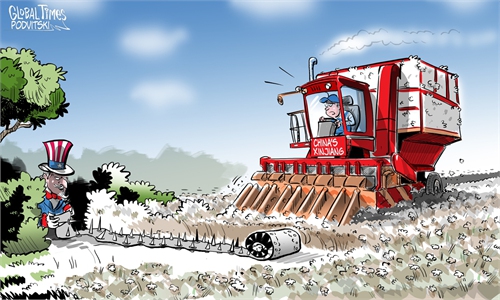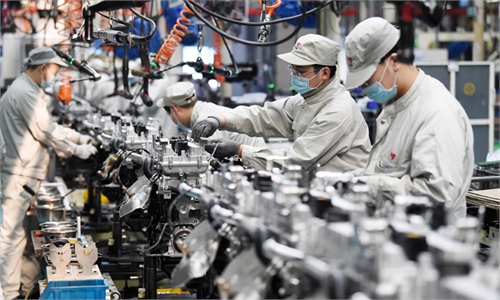
Illustration: Liu Rui/GT
Some media outlets in the US never tire of comparing the challenges of American manufacturing with the progress of Chinese manufacturing, even though such comparisons may not be meaningful. This approach is prone to causing unwarranted anxiety that could distract the US from addressing its manufacturing problems.US naval shipbuilding is at a 25-year low, Fox News reported on Sunday. The report also said that the US lags behind China in the pace of production, perpetuating the familiar narrative of the "China threat."
The decline in US naval shipbuilding can be attributed to the fading US shipbuilding sector, a clear indication of the nation's industrial hollowing-out. However, it is unreasonable for some US media outlets to sensationalize the "China threat" narrative just because of the manufacturing problems in the US.
Implying that there's a "China factor" in the manufacturing predicament of the US may get attention and cater to the political environment, but it also diverts attention from the problem and offers no real assistance in fixing it.
By the early 19th century, the US was already the world's leading shipbuilder. But from 1951 to 1981, the US share of global ship deliveries only exceeded 5 percent twice, and in most years it did not exceed 3 percent.
Moreover, since 1960, due to US commercial shipyards' lack of competitiveness, no vessels have been built for export in the US, and almost no US commercial shipyards' orders have come from the competitive international market, according to the Cato Institute.
That means that the US had been relegated to a peripheral role in the global shipbuilding market long before China's emergence. By the time China accounted for only 2.5 percent of global shipbuilding output way back in 1990, US shipyards had already made their exit.
The plight of the US shipbuilding industry is just a small portion of the overall situation of the American manufacturing industry, which has been caused by various reasons including supply chains, labor shortages, high costs and overly protective policies.
The integrity of supply chains is crucial for the revitalization of the shipbuilding industry, and the US is confronted with substantial challenges in this area. Shipbuilding is a sophisticated engineering process that requires a vast array of components and materials, yet the supply chain in the US is fragmented. This limits the industry's development and increases production costs, making it difficult for American shipyards to compete with shipbuilders in Asia and other regions.
The shortage of skilled workers is another major challenge. The decline of the sector over the past few decades led many skilled workers to switch careers or lose their jobs. Even if we ignore the obstacles in the supply chain, there just aren't enough engineers and skilled workers in American shipyards to support the revival of the industry.
The downfall of the US shipbuilding industry can be attributed in part to the financialization of the US economy. Shipbuilding demands substantial investments in cutting-edge technology, equipment and skilled labor, with returns often taking years to materialize. American investors have been lured toward industries offering quicker returns and lower risks, like finance, banking and insurance. This shift in investment preferences has hindered the shipbuilding industry's access to funds, impeding technological progress and production growth.
In these circumstances, if the US continues to blame the decline of the shipbuilding industry on external factors, such as competition from China, it will not be able to truly find a solution to revitalize the shipbuilding industry.
China is one of the few shipbuilding nations in the world that possesses advanced technology, economies of scale, a complete industrial chain and a sensitive response to market demand. These are conditions that the US does not have. Using China as a reference will only exacerbate the anxiety of the US without providing any help.
The revival of the US shipbuilding industry requires a fresh strategy and a new mindset, rather than simply a repeat of past patterns. It is crucial for the US to adopt a cooperative attitude and join the global industrial chain, rather than rebuilding the industrial chain of the past.



